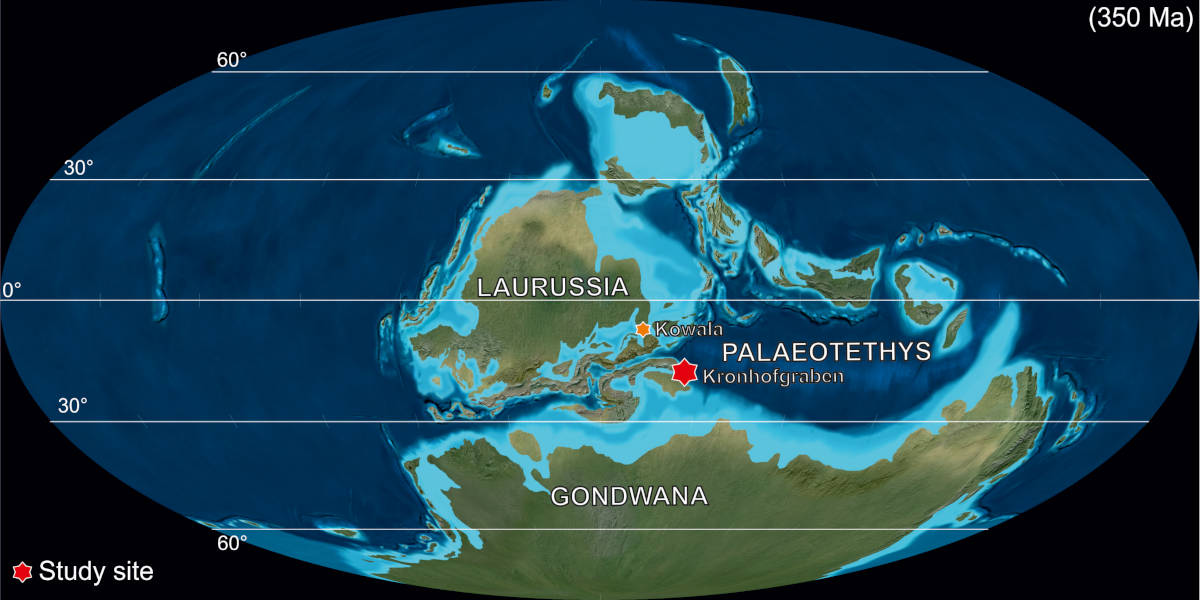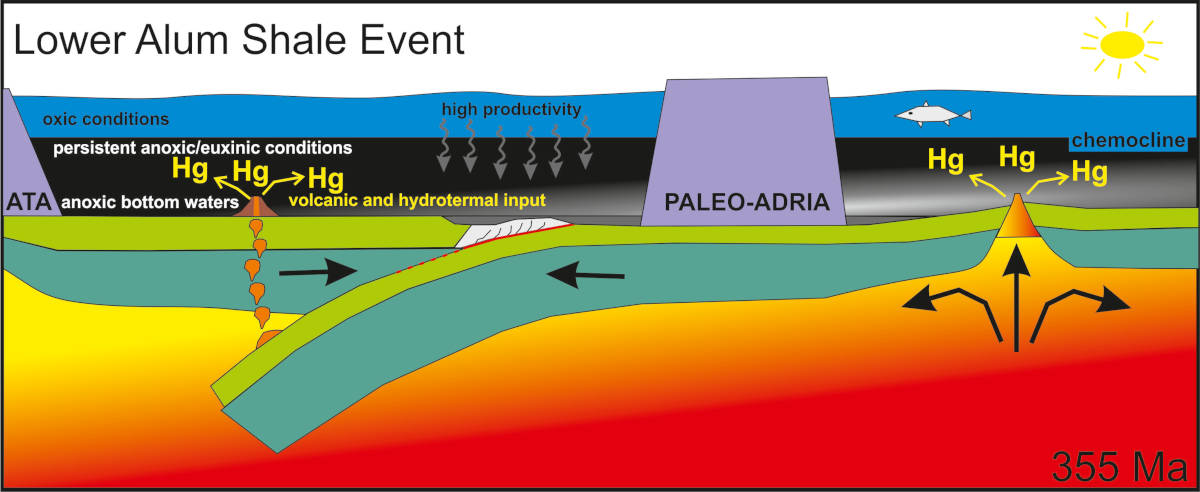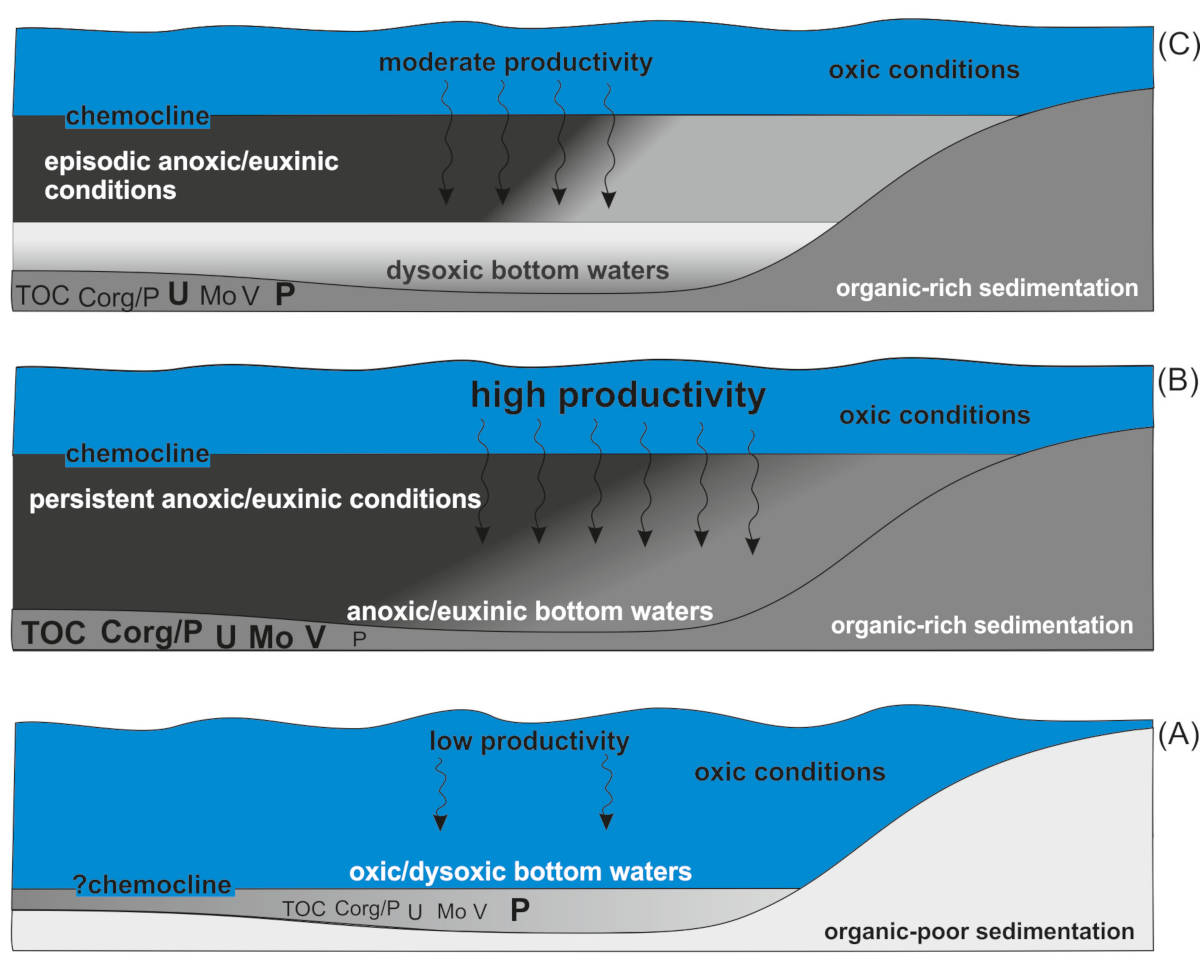Michał Rakociński, Daria Książak, Agnieszka Pisarzowska and Leszek Marynowski from the Institute of Earth Sciences of the University of Silesia, have published a paper in the prestigious journal Gondwana Research on the influence of intense submarine volcanism and hydrothermal activity on the development of anaerobic conditions in marine environments during the mid-Tournaisian anoxic event. This event occurred about 355 million years ago and affected numerous groups of marine organisms as anaerobic conditions in the seas and oceans emerged on a global scale. Based on geochemical analyses and the occurrence of pyrite framboids, the development of anaerobic conditions in marine sediments from the Carnic Alps was documented. In addition, significant (3650 ppb) mercury anomalies were documented for the first time in Lower Carboniferous sediments in the studied profile, indicative of increased submarine volcanism during this time, which led to a warming climate resulting in the deglaciation of Gondwana and global transgression. Researchers link the presence of pronounced mercury anomalies to submarine arc-volcanism and hydrothermal activity associated with the collision of peri-Gondwanan terranes such as Paleo-Adria and possibly Armorican and/or Noric terranes during the first phase of the Variscan orogeny.
This research is an extended result of the Master’s thesis of Daria Książak, M.Sc. entitled Record of the mid-Tournaisian Anoxic Event in the Kronhofgraben (Carnic Alps, Austria), which was carried out under the supervision of Michał Rakociński, Ph.D., as part of the NCN OPUS research project under his direction entitled Depositional environments during the Lower Alum Shale Event (Early Carboniferous) on the southern shelf of Laurussia in the light of integrated geochemical, paleoecological and facial investigation.
Rakociński, M., Książak, D., Pisarzowska, A., Marynowski, L. 2022. Mercury evidence of intense submarine volcanism and hydrothermal activity during a mid-Tournaisian anoxic event in the Carnic Alps. Gondwana Research 109, 225-238.








